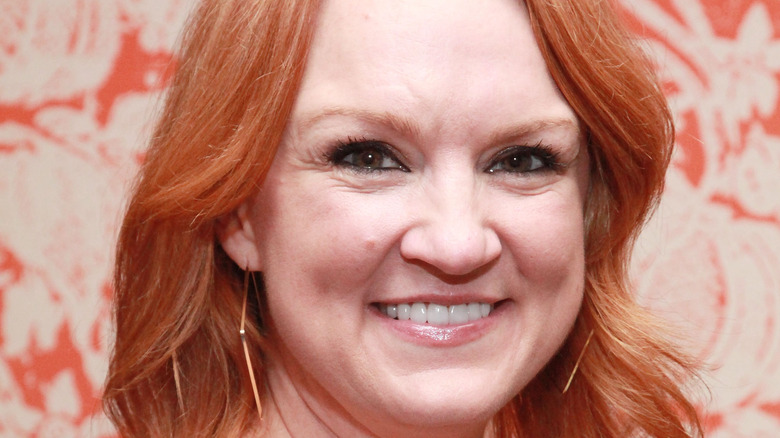Ree Drummond's Baking Trick To Avoid Dealing With Clumpy Butter
Ree Drummond is known for her delicious baked goods. What makes her chocolate sheet cakes and luscious cinnamon rolls so utterly irresistible? The answer is simple: butter and plenty of it. As anyone familiar with her celebrated blog, TV shows like "Christmas Cookie Challenge," or colorful cookbooks can attest, the winsome celebrity chef known as The Pioneer Woman goes through a truly staggering amount of butter (per Food Network). This approach results in absolutely dreamy desserts, as moist and rich as they are deeply flavorful. Drummond is so devoted to the tried-and-true dairy product, her website even boasts a tutorial for making your very own butter at home, with nothing but a container of cream and a sturdy blender (via The Pioneer Woman).
As passionate bakers know, using butter in baking isn't as simple as throwing it into the mixing bowl and calling it a day. Getting the malleable substance to play nicely with powdery mixtures can be especially frustrating: When improperly combined, you can easily end up with a bowl full of frustratingly clumpy butter. Luckily, Drummond has a clever baking tip that will help you avoid this kitchen quandary.
Roll sliced butter in flour for easy incorporation
Baking is a notoriously exacting practice. Measurements need to be precisely correct, chemical reactions must be carefully assembled, and everything should be stirred for specific amounts of time. Deviating from these dictates can result in such culinary calamities as tough biscuits and deflated soufflés. Though clumpy butter might not seem like a big deal, it can throw an entire recipe off. The baker must devote extra time to breaking the butter clumps down, which might overdevelop the batter's gluten, or allow the butter to warm up. The former mistake can result in stiff cakes, as detailed by King Arthur Baking Company, while the latter can prevent buttermilk biscuits from achieving proper flakiness.
So, how does one avoid clumpy butter? According to The Pioneer Woman, it's simple. First, make sure your butter is at the proper temperature, according to the recipe you're following. Then, cut the butter into small and manageable pieces. Finally, dip the pieces of butter in flour, coating them entirely. This small step makes incorporating the butter into the main flour mixture significantly easier. No more butter boulders in your batter — these carefully prepared chunks practically mix themselves into whatever you're combining.
Better baking with butter
Successful (non-vegan) baking pretty much requires a close relationship with butter. Ree Drummond is a great example of this truth: As she noted on her blog back in 2011, she's capable of going through 484 sticks of butter in a mere two weeks (via The Pioneer Woman). Upon realizing this, she remarked, "I love life." This is the right attitude to take when it comes to baking with butter: Embrace it wholeheartedly, or consider doing something else.
But butter-centric baking isn't only a matter of filling your fridge with sticks upon sticks of creamy yellow goodness. For one thing, there are as many types of butter as there are cows. This makes choosing the right type of butter for your baking a complex task, requiring the baker to consider many different elements. How fatty should your butter be? Should it come from grass-fed cows or ones raised on corn? What about compound butters, like the truffle butter Ina Garten can't stop using? As you delve into this world of dairy, you might even end up with a favorite brand — Drummond swears by Land O' Lakes (per The Pioneer Woman).
Then there's the question of incorporating the butter into the baked good. Drummond isn't the only one with tips in this regard: Some chefs swear by grating frozen butter into their batters, while Cook's Illustrated recommends using a food processor. Which way is best? You'll just have to try them all to find out.


